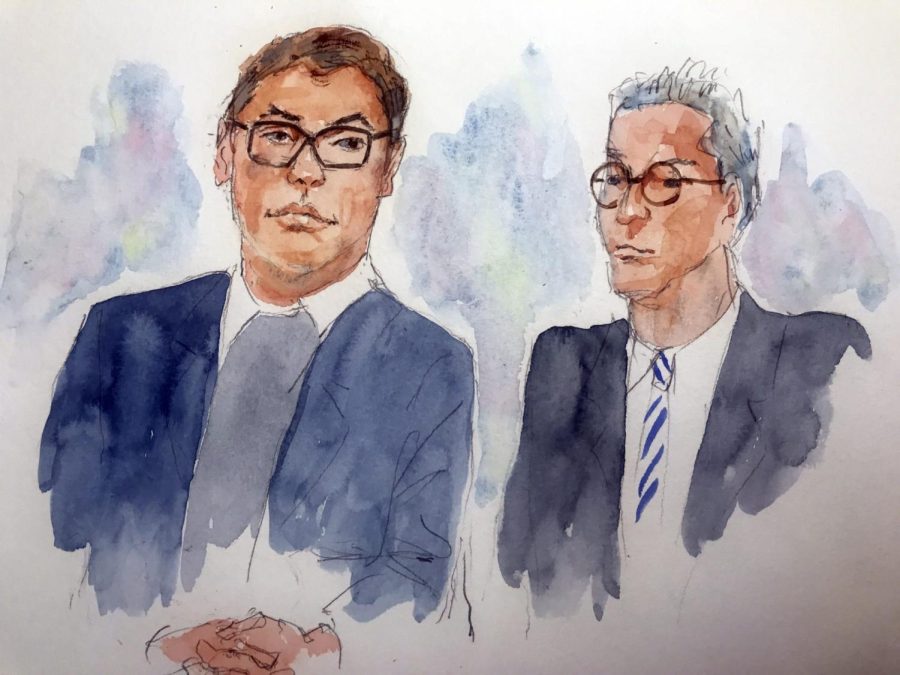While Veterans Day was last week, the acknowledgment of the men and women who serve our country continues every day through the provision of benefits. These benefits provide the attention and care that veterans need.
In addition to doing what is necessary to make sure benefits are provided in a timely manner, it is crucial that the Department of Veterans Affairs (VA) does an adequate job of making vets aware of what they are entitled to and the steps they need to take.
“No system is perfect,” Daniel Panzarella, a junior at DePaul, said. He served for four years in the Marine Corps and Marine Corps Infantry and is currently president of the Student Veterans Union on campus. “We can strive for that but that’s just the reality of the world.”
The Department of Veterans Affairs has received a great amount of criticism for the backlog of thousands of veteran claims for benefits, which forced some vets to wait three years before receiving them. This past March, the Center for Investigative Reporting revealed that the number of veterans waiting a year or more for benefits increased from 11,000 in 2009 to 245,000 in December 2012. In March, there were 900,000 veterans waiting for disability claims; the average wait was 273 days.
Since then, however, the VA put in place a new computer system to ease the process. This, as well as a large amount of public pressure, helped shrink the backlog. By October, the number of vets waiting a year or more for benefits dropped to 34,000, and the average wait dropped to 168 days. The VA aims to have no veteran wait more than 125 days for benefits by the year 2015.
Matthew Sorenson, a nursing professor at DePaul, has seen firsthand both the success and shortcomings of the Veterans Administration, particularly in health care. After his experience with a post-doctoral fellowship at a VA multiple sclerosis clinic, Sorenson said funding is the primary challenge for the Department of Veterans Affairs. In terms of health care, it is the nation’s largest integrated health care system; they have to allocate funds between upkeep, patient care, new building development and research. This is also divided among more than 1,700 various facilities such as hospitals, clinics and community living centers.
“There are many people in the VA who are very dedicated and care about what is being provided,” Sorenson said. “However, the buildings are older, and they do not always have access to the services and resources that are in other facilities.”
While there is a lot to criticize about the bureaucracy of the Department of Veterans Affairs, a lot of Americans fail to realize how far the nation has come in providing benefits. During World War I, an average soldier was paid a dollar a day to risk his life, while a majority of Americans working at home were making at least three times that amount.
Many veterans from this time, who suffered through the Great Depression on top of the health issues acquired from serving, had to advocate for change and demand that the government do more to provide for those who served. The calls for the U.S. government to do more paid off. In 1944, the most significant and leading initiative in providing veteran benefits was enacted: the G.I. Bill of Rights. It would allow for educational training, home loans and unemployment compensation. Today, it does even more in providing educational benefits.
In 2008, a new law was passed to cover more educational expenses, provide a living allowance, assistance for books and the option to transfer any unused educational benefits to a spouse or child. Two weeks ago, the VA announced the millionth recipient of these newer post-9/11 G.I. Bill benefits.
“As far as the G.I. Bill is concerned, it is an amazing benefit,” Panzarella said. “There is no way I would be at DePaul without it. College was never in my cards growing up, and if it wasn’t for the opportunity that was given to me, I wouldn’t be here.”
While all these opportunities for veterans are available, today’s challenge is to make sure they are fully aware of them. Whether it is through an on-campus organization like the Student Veterans Union that plans events and service activities or a VA clinic, places that provide beneficial information to vets are greatly helpful.
“The country does a good job at putting benefits in place for vets to succeed, and the ball is in our court to run with it,” Panzarella said. “You don’t have to come out in an interview saying you are a veteran or be a part of our organization, but at least join a channel where you can find out all the things that are there for you.”






